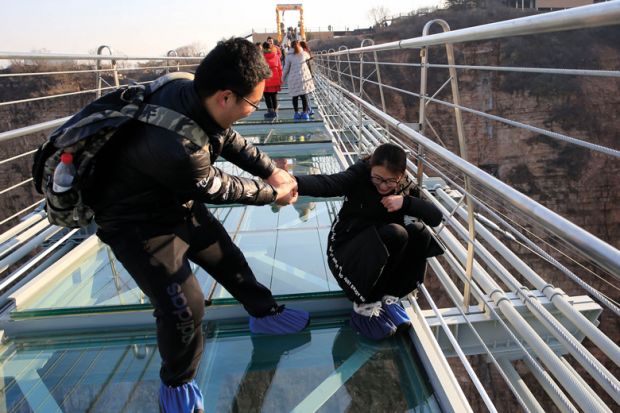An Australian university has struck a deal to develop intellectual property in the world’s biggest market in a bid to bridge the “valley of death” that sees many research discoveries fall short of securing commercial-scale investment.
The Monash Technology Transformation Institute aims to connect Monash University’s biomedical ingenuity with China’s entrepreneurial flair, manufacturing capacity, inexhaustible supply of patients and funding of at least A$100 million (£55 million) over a decade.
There will be an initial focus on pharmaceuticals and bioengineering, although innovations in other fields and from other Australian universities could eventually be included.
The alliance aims to be fully operational by the middle of May, incubating five projects at a time. Already, three innovations – two drugs and a medical device – have been selected for development.
Monash deputy vice-chancellor Ken Sloan said that the impact of medical research should not be limited to its domestic population. He said that “bold steps” were needed to find markets elsewhere, and China – with its relative proximity and booming economy – was a natural focus for an Australian institution.
A former chief operating officer at the University of Warwick, Mr Sloan spent six months in China en route to Australia. “You see the scale of the future needs in health,” he said.
Unlike other university commercialisation deals, which usually involve single products or partners, the new initiative harnesses four local organisations – the Chinese arm of a Hong Kong property investment and management firm, a venture capital company and the governments of Shenzhen municipality and Pingshan district – to commercialise existing and anticipated research discoveries.
Shenzhen is famous for its rapid evolution from obscure village to a gleaming metropolis of some 12 million residents. The new alliance is expected to be housed in an industrial park in Pingshan, a relatively unprosperous district that aspires to become a centre of biomedical innovation and borders the manufacturing stronghold of Dongguan.
Oliver Hu, a Hong Kong-based executive who helped establish the MTTI, said other universities in Australia, Japan and the US were “closely monitoring” its progress.
He said that its prospects would be boosted by its location in the Greater Bay Area, a megalopolis of 11 cities – including Guangzhou and the special administrative regions of Hong Kong and Macao – which has been earmarked as an economic priority zone, with trade barriers reduced and development coordinated by the central government.
Beijing also plans further enhancements to the region’s already impressive infrastructure, which includes seven airports, three of the world’s biggest seaports, the world’s longest sea bridge and one of China’s two stock exchanges.
Dr Hu said that the MTTI was a good commercialisation model for universities elsewhere. “But you need to find the right partners,” he said.
The approach faces challenges, including safeguarding intellectual property and avoiding reputational damage. Collaboration with China is an increasingly sensitive topic in Australia, particularly when it involves technological research, while Pingshan attracted notoriety last year when students were detained after supporting striking factory workers.
Mr Sloan said that biomedical research was relatively uncontentious, and that the risks had been mitigated through careful legal agreements. “We’ve got government, industry partners and a university signing up collaboratively for at least 10 years,” he said. “It’s in everybody’s interests for this to be successful.”
Register to continue
Why register?
- Registration is free and only takes a moment
- Once registered, you can read 3 articles a month
- Sign up for our newsletter
Subscribe
Or subscribe for unlimited access to:
- Unlimited access to news, views, insights & reviews
- Digital editions
- Digital access to THE’s university and college rankings analysis
Already registered or a current subscriber?









